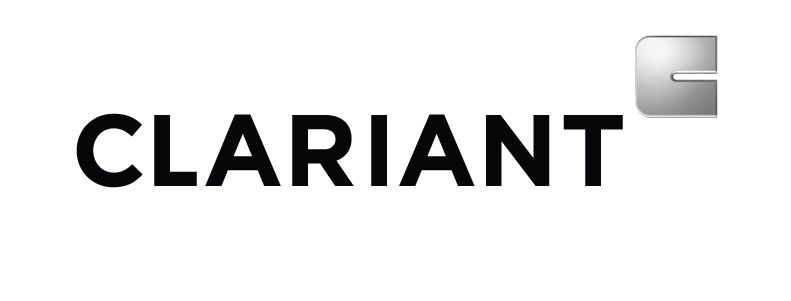Cold process emulsifiers are becoming increasingly popular as manufacturers search for ways of reducing costs and greener production methods. John Woodruff assesses their suitability for purpose
An emulsion is a two-phase system. The principal components are an oil phase and an aqueous (water) phase. The aqueous phase is water plus any combination of polar materials that dissolve, at least to some extent, in water. The oil phase comprises one or more oily materials, or other ingredients which are non-polar and exhibit at least some solubility in oily materials. The conventional way of forming a cosmetic emulsion is to heat the two phases separately then bring them together with vigorous mixing and continue mixing until cool. To stop the emulsion separating one or more emulsifiers are incorporated in the composition.
It takes a lot of time and energy to heat vats of oils and waxes and vats of water and water soluble ingredients to 70°C or more then, after they have been mixed together, it takes more time and energy to cool the result back to ambient temperature. For this reason cold process emulsifiers are becoming increasingly popular as manufacturers search for ways of reducing costs. If it is possible to make the product at room temperature there are other benefits; perfumes and volatile ingredients may be added at any stage of the process and the marketing department may claim the product to be environmentally friendly with a reduced carbon footprint.
Unfortunately there are a limited number of suitable emulsifiers and those available are often restricted in application. Obviously the emulsifier has to be either a liquid or readily soluble in either the aqueous or oil phase of the composition. The oil phase itself cannot contain any waxes or wax-like materials, which precludes glyceryl stearate and cetearyl alcohol, those two favourite ingredients of the emulsion formulator. Because waxes cannot be used to thicken products a rheology modifier is necessary and must be selected with care.
Blended solutions
One way of overcoming these limitations is to use pre-blended emulsion concentrates, of which there are several available. These consist of a mixture of emulsifiers, waxes and oils and may also contain water. They provide those with limited means of production with a ready made basic product that can be adapted to the user’s requirements by the addition of suitable additives and perfume. One such composition is marketed by Cognis as Emulgade CM [INCI: Cetearyl isononanoate, ceteareth-20, cetearyl alcohol, glyceryl stearate, glycerin, ceteareth-12, cetyl palmitate]. It has been formed using phase inversion technology (PIT), making it possible for Cognis to incorporate solid high melting waxes into a liquid emulsion concentrate.
Emulpharma 135 from Respharma is an emulsion concentrate comprising lauryl alcohol, C12-C15 pareth-3, C12-C15 pareth-3 phosphate, myristyl alcohol, cyclopentasiloxane and water that can be adjusted to suit its intended application. Tego Wipe Flex [INCI: Ethylhexyl stearate, phenoxyethanol, polyglyceryl-4 laurate, sorbitan laurate, dilauryl citrate] from Evonik is an emulsifying system suitable for the formulation of o/w impregnating liquids for cosmetic wipe applications. It can be used at 4-6% and allows for the addition of various water and oil-soluble actives. Evonik also markets three other systems ready for dilution for use in wet wipe formulations under the trade names Tego Wipe DE, Tego Wipe DEPFG and Tego Wipe LUX.
Natpure Sol [INCI: Glycerin, sucrose laurate, sorbitol, sucrose dilaurate, sucrose trilaurate] from Sensient Technologies is primarily designed for solubilising fragrances and essential oils in aqueous systems but can also be used for the preparation of o/w emulsions. Neocare PR3 [INCI: Polyglyceryl-3 polyricinoleate, polyglyceryl-3 ricinoleate] from Gova is used for the preparation of w/o emulsions and the blend is said to be tolerant to electrolytes, alcohol and a wide range of oils, esters and silicones. Seppic recommends Easynov [INCI: Octyldodecanol, octyldodecyl xyloside, PEG-30 dipolyhydroxystearate] for the preparation of w/o creams without heating. It is said to utilise a patented technology that entraps 80% or more internal phase to provide compositions with a unique skin feel that is soft, fresh and cushiony.
Modes of action
An examination of emulsifiers offered for cold processing shows they fall into distinct groups. Those for w/o emulsions tend to be polyglyceryl esters; for o/w emulsions there is a predominance of alkoxylated alcohols and phosphorous compounds; there is a group of silicone-based emulsifiers; and a number based on polymer chemistry. Most emulsifying systems work by reducing surface tension but it is also possible to make stable emulsions using polymers that hold the internal phase droplets in suspension. An example of these is the Rheosol range from Rheolab Laboratories, which are based on acrylate or polyacrylate polymers and are supplied pre-dispersed in oils or esters to which the aqueous phase can be added with rapid stirring. Anionic and cationic versions are available, they do not require a neutralisation step and other oil phase ingredients may also be added.
Simulgel INS 100 [INCI: Hydroxyethyl acrylate/sodium acryloydimethyl taurate copolymer, isohexadecane, polysorbate 60] from Seppic is described as a thickening and emulsifying agent in liquid form that requires no pre-dispersion or neutralisation. It emulsifies all types of oil phases without heating to form cream gels with a fresh texture that melts on contact with the skin leaving a feeling of velvety softness. Also from Seppic, Sepimax ZEN [INCI: Polyacrylate crosspolymer-6] forms electrolyte tolerant gels that can incorporate 20% oil phase and remain stable.
The Jeesperse CPW range from Jeen is based on sodium polyacrylate in combination with polyethylene or other cosmetic ingredients. The Jeesperse is added to the aqueous phase with stirring, then the oil phase added and a stable emulsion is formed. The results are said to have a luxurious skin feel for gel-type emulsions and the CPW-2 grade has been used to prepare sunscreen gels containing 10% mixed UV absorbers to give SPF15.
The emulsifying polymer Cosmedia SP [INCI: Sodium polyacrylate] from Cognis is said to enable formulators to achieve very stable emulsions that are easy to spread and feel light and silky on the skin. It is compatible with a range of different oil phases including vegetable and silicone oils and with polar solvents such as ethanol. Oil is trapped in gel pores, leading to high emulsion stability, and it may be used to prepare low viscosity sprays and lotions, but is also suitable for thicker, richer cream formulations.
Submica M [INCI: Mica] from Sensient Technologies can be used to formulate very stable surfactant-free w/o emulsions containing up to 30% of aqueous phase dispersed in non-polar oils. Also based on mica, Submica E from the same company is added to the water phase to form an opaque cream-like gel with a good feel on the skin. Its particles are small platelets that have different polarities on the two big faces (negatively charged) and the four small faces (positively charged). In water these particles get organised due to electrostatic forces and build a house of cards structure that increases the viscosity of the aqueous phase. Droplets of oil can be trapped within the Submica E house of cards structure and it is possible to emulsify up to 20% oils.
Formulation guidance
Croda recently published a comprehensive guide to cold processing entitled Blue: a practical pathway to Green. It starts with a method for comparing the energy requirements of conventional hot processing to those needed for cold mixing, showing that savings could be as high as 80%. It describes hybrid emulsifiers that consist of more than one ingredient, such as the Versaflex and PolaSperse mixtures; it describes anionic surfactants from the Crodafos and Crodasinic ranges; amphoterics like Crodateric CAB 30 and Crodateric CAS 50; and a number of sugar esters. Also described are the well known Span and Tween non-ionic emulsifiers and numerous ethoxylated triglycerides, fatty alcohols and sorbitol as well as various cationic materials suitable for processing hair conditioning products. The principal functions and properties of each of these materials are listed together with suggested applications. Other ingredients suitable for cold processing are shown and the brochure contains numerous formulations that illustrate the types of products suitable for manufacture using cold processing technology.
| Table 1: Examples of other emulsifiers that may be used for cold processing | |||
| Trade name | Type | INCI | Notes |
| AbilCare XL80 Evonik | o/w | Bis-PEG/PPG-20/5 PEG/PPG-20/5 dimethicone; methoxy PEG/PPG-25/4 dimethicone; caprylic/caprictriglyceride | Silicone-based emulsifier compatible with wide range of oils and silicone compounds |
| Cosmedia SP Cognis | o/w | Sodium polyacrylate | For cold mix systems either alone or in combination with other emulsifiers |
| Cosmedia Triple C Cognis | o/w | Polyquaternium-37, dicaprylyl carbonate, lauryl glucoside | Base for cold mix cationic systems |
| Creagel EZ CIT Sarl | o/w | A range of emulsifiers based on sodium acrylate/sodium acryloyldimethyl taurate copolymer | Creagel EZs can be used in both hot and cold processes over wide pH range |
| Dehyquart L80 Cognis | o/w | Dicocoylethyl hydroxyethylmonium methosulfate, propylene glycol | Historically used in hair care but may be used in skin care |
| Dracorin Symrise | o/w | Glyceryl oleate citrate, caprylic/capric triglyceride | HLB 13: good emulsifying ability with both polar and non-polar oils up to 40% oils |
| Emulpharma 35 Respharma | o/w | Palmeth-2 phosphate | Soluble in mineral oils, vegetable oils, fatty alcohols, fatty acids and polyethylene glycol |
| Emulgin SG Cognis | Sodium stearoyl glutamate | Strong o/w emulsifier at low concentrations. High compatibility with electrolytes | |
| Emulgin VL75 Cognis | o/w | Lauryl glucoside, polyglyceryl-2 dipolyhydroxystearate, glycerin | Liquid APG-based emulsifier ideal for cold mix system including sprays and lotions |
| Genapol UD Range Clariant | o/w | Undeceth-5, Undeceth -7, Undeceth—8 | HLB 11/13/13: used in hair colour emulsions and styling products |
| Heliogel Lucas Mayer | o/w | Sodium acrylates copolymer, hydrogenated polyisobutene, phospholipids, polyglyceryl-10 stearate, Helianthus annuus seed oil | Polyvalent emulsifier made with sunflower phospholipids, stable to electrolytes, ethanol and over wide pH range |
| HEST IS-2-O Global-Seven | o/w | Isosteareth-2-octanoate | HLB 12-14: long branched chain, fully saturated emollient ester |
| Hostaphat 0-300 Clariant | o/w | Oleth-3 phosphate | Can be processed cold for creams and lotions. Antistatic agent and brightening properties |
| Hostaphat KL 340D Clariant | o/w | Trilaureth-4 phosphate | Its high HLB value allows the manufacture of emulsions with polar oils and UV filters |
| Hydriol PGHO.4 Hydrior AG | o/w | Polyglycerol-4-oleate | Non-sticky feeling and PEG-free. Three variants available with HLB 8, 10 and 13 |
| Imwitor 375F Sasol | o/w | Glyceryl citrate/lactate/oleate | Good for polar oils and can be used in cold process formulations |
| Inutec SP-1 Adina | o/w | Inulin lauryl carbamate | Non-ionic, polymeric-based surfactant system derived from chicory inulin |
| Lecigel Lucas Meyer | o/w | Lecithin, sodium acrylates copolymer | For gel cream systems. Stable to ethanol & electrolytes over a wide pH range |
| Structure XL Akzo Nobel | o/w | Hydroxypropyl starch phosphate | Starch-based rheology brings body to the formulation and a conditioning after feel |
| Unigel HW1 Unifect | o/w | Polyacrylamide, hydrogenated polyisobutene, beeswax, laureth-7 | Can be added after emulsification if further increase in viscosity and emulsion stability is desired |
| Unigel HS1 Unifect | o/w | Polyacrylamide, vegetable squalane, hydrogenated polyisobutene laureth-7 | Suitable for use in sun protection products as is compatible with both physical and chemical UV filters |
| Unigel HZ1 Unifect | o/w | Polyacrylamide, hydrogenated polyisobutene, laureth-7 | Used to produce milky gel emulsions with a soft and non-tacky skin feel |
| Abil EM90 Evonik | w/o | Cetyl PEG/PPG-10/1 dimethicone | Compatible with wide range of oils, silicone compounds and UV absorbers |
| Cremophor WO 7 BASF | w/o | PEG-7 hydrogenated castor oil | Particularly suitable for liquid and soft creams |
| Dehymuls LE Cognis | w/o | PEG-30 dipolyhydroxystearate | Ideal for low viscosity w/o lotions |
| Dehymuls PGPH Cognis | w/o | Polyglyceryl-2 dipolyhydroxystearate | A good w/o emulsifier or o/w co-emulsifier |
| Emulpharma PG20 Respharma | w/o | Polyglyceryl-2 diisostearate | Soluble in ethanol, mineral oil and vegetable oils |
| Emulsogen LP Clariant | w/o | Oleth-5 | HLB 9: forms readily soluble bath oils, hair colour developer emulsions, hair treatment rinses, hair gels and hair colour creams |
| Genapol 0 020 Clariant | w/o | Oleth-2 | HLB 5: applications as Emulsogen LP |
| GMIS Ester Lubrizol Schercemol | w/o | Glyceryl isostearate | HLB 3.5: Schercemol GMIS ester functions as both an emulsifier and an emollient |
| Hostacerin TGI Clariant | w/o | Polyglyceryl-3 diisostearate | As Emulsogen LP |
| Hostcerin DGI Clariant | w/o | Polyglyceryl-2 sesquiisostearate | High emulsifying effect upon paraffin and ester oils. Pleasant skin feel |
| KF 6038 Shin Etsu | w/o | Lauryl PEG-9 polydimethylsiloxyethyl dimethicone | Also forms mixed o/w/si emulsions. Branched chain gives richer skin feel |
| Lamesoft TGI Cognis | w/o | Polyglyceryl-3 diisostearate | Used for cosmetic emulsions, lipophilic sticks and ointments |
| Nikkomulse WO-NS Nikko Chemicals | w/o | Polyglyceryl-6 polyricinoleate, polyglyceryl-2 isostearate, disteardimonium hectorite | It can take up to 70% internal phase producing very light w/o emulsions which are non tacky |
| SF 1528 GE Bayer Silicones | w/o | Cyclopentasiloxane, PEG/PPG-20/15 dimethicone | Silicone emulsifier. Offers uniform film and cold processing |
| Tego Care LTP Evonik | w/o | Sorbitan laurate, polyglyceryl-4 laurate, dilauryl citrate | PEG-free for emulsification of sprays and lotions |
| KF 6017 Shin Etsu | w/si | PEG-10 dimethicone | Forms light w/si emulsions at low use levels (2-4%) |
| KF 6050 Shin Etsu | w/si | Cyclomethicone, PEG/PPG-18/18 dimethicone | 50% active content |
| KSG-210 Shin Etsu | w/si | Dimethicone, dimethicone/PEG/10/15 crosspolymer | Cross-linked 3-D backbone imparts similar characteristic silk/satin skin feel to silicone elastomers |
| KSG-320 Shin Etsu | w/si | Isododecane, PEG-15 lauryl dimethicone crosspolymer | See KSG-210 |
| 22-6711B Shin Etsu | w/si | Isododecane, PEG/PPG-18/18 dimethicone | 50% active content |
Author
John Woodruff
www.creative-developments.co.uk





